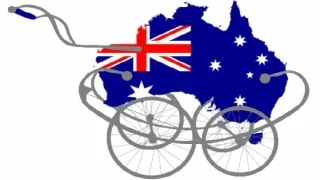
The rapid spread of HIV/AIDS in Papua New Guinea has created a health emergency. At least 120,000 Papua New Guineans are likely to have HIV/AIDS and infections are spreading quickly.
Infection rates are now estimated to be 2% to 3% of the population. If present rising infection trends persist, 18% of the population could be affected by 2010 and 25% could be affected by 2020. Papua New Guinea could lose a million people to the disease. The decline in the labour force and in gross domestic product per capita would be catastrophic.
The purpose of this paper is not to allocate blame but to present the dimensions of HIV/AIDS infection and its spread. It outlines the biological, social and political drivers responsible for the rapid rise of HIV/AIDS infections so that practical steps to arrest the current trends can be identified.
In Papua New Guinea, HIV/AIDS is spreading through heterosexual sex and social conventions of promiscuity. Old men sleeping with young girls keeps the virus circulating between generations; casual and commercial sex increases the chance that men will bring the virus home to their wives; the low status of women means they have little power to negotiate sexual relations, let alone condom use.
Young women, often subject to rape, are the most vulnerable group in the country.
The HIV virus is attacking a population already debilitated by malaria, tuberculosis and diarrheal diseases. These are endemic because of low standards of living. High crime levels and suspicion of police and government also aggravate the epidemic by decreasing trust, and fuelling rumours and misinformation. The result is sorcery and quack remedies that become part of the problem and often lead to more violence, mainly against women.
The extent of the epidemic is probably underestimated because the health infrastructure is crumbling, particularly in rural communities. Most hospitals are poorly equipped and maintained and often run out of basic medical supplies. Anti-retroviral therapy can only be offered to a small proportion of those infected.
Australia has a direct interest in Papua New Guinea’s HIV/AIDS epidemic because increasing numbers of Papua New Guinea nationals are accessing the Queensland health system in the Torres Strait islands and on Cape York.
Large volumes of aid, notably from Australia, but also from other countries and multilateral agencies, are being devoted to the epidemic. However, in the absence of a commitment by the Papua New Guinea government to fighting HIV/AIDS they are ineffectual.
Nowhere in the world has a country made serious headway in stopping or slowing the spread of HIV/AIDS without a serious and resolute commitment by those in power. There have been too many tragic precedents for Papua New Guinea to ignore their own HIV/AIDS epidemic. The world wants to help, but outside efforts alone cannot be effective without leadership from Papua New Guinea itself.
Miranda Darling Tobias is a Research Fellow at The Centre for Independent Studies.










